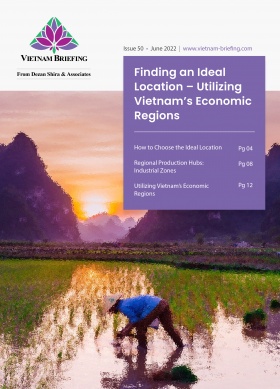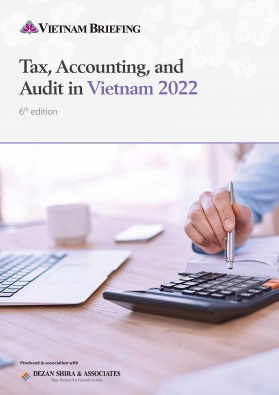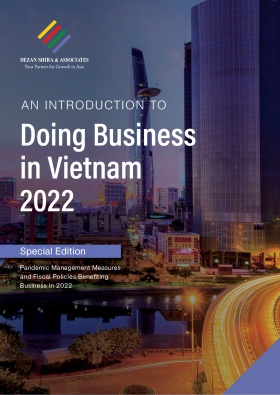No World Cup for Vietnam but Still Key Player in World Football Market
Vietnam failed to qualify for the 2022 World Cup in Qatar, joining a host of other countries on the sidelines – Italy, for example. But despite not competing on the pitch, Vietnam is still an integral part of the world football ecosystem. Here’s how.
Vietnam has never played in a World Cup tournament (excluding qualifiers) but this hasn’t stopped the football mad nation from getting involved.
Just last month, the national broadcaster picked up the television rights to the 2022 FIFA World Cup for ‘no less than $12 million’, according to VN Express.
This is on the back of a survey by Indochina Research that found 77 percent of Vietnamese people watched at least one game of the World Cup in 2018.
Clearly, the consumer market for all things football is growing, alongside rising incomes, and this has created a fertile market for vendors of football-related products from mixed media to apparel.
But of course, there is more to Vietnam’s role than as a consumer in the world football market. Vietnam also doubles as a manufacturing powerhouse for football merchandise and sportswear.
As such, despite not fielding a team in Qatar, Vietnam is still likely to be well represented on the pitch.
Big sporting brands making football kits in Vietnam
Vietnam has become a hub of manufacturing activity for big sportswear brands.Adidas, for example, has 76 third-party suppliers in Vietnam employing some 200,000 workers.
Adidas has been an official partner of the FIFA World Cup since the 1970s, supplying match balls as well as uniforms for player escorts, officials, referees, ball crew, and volunteers.
This year, it’s also supplying World Cup contenders Argentina, Germany, Japan, Mexico, and Spain with their official kit.
In 2021, Vietnam accounted for 30 percent of Adidas’ production volume of footwear and 15 percent of its apparel – ergo there is a good chance Vietnam-made cleats will be tearing up the football field in Qatar.
Similarly, Nike produces 51 percent of its footwear in Vietnam across 138 suppliers scattered around the country. It employs an estimated 484,000 workers.
At the World Cup this year, Nike will be responsible for the kits of: Qatar, Poland, Saudi Arabia, Brazil, France, Croatia, England, the Netherlands, South Korea, Canada, Portugal, the USA, and Australia.
And then there is Puma. The third biggest sportswear sponsor at the 2022 World Cup.
Puma’s kit will adorn the players of Serbia, Switzerland, Uruguay, Ghana, Morocco, and Senegal.
Like Adidas and Nike, Puma also has a vast presence in Vietnam. It began working with Vietnamese manufacturers in 2007 and Vietnam has since become its ‘strongest production country’ accounting for 32 percent of Puma’s total production volume.
Football consumption in Vietnam
Vietnam’s burgeoning middle class is showing itself to be more than just a source of labor for the factories of big sports brands.
Vietnamese love to watch football, but specifically, they love to watch international football.
Most Popular Football Leagues to Watch in Vietnam
| Football League | 18+ | Men 18-34 |
| English Premier League | 26% | 53% |
| Spanish LaLiga | 11% | 26% |
| UEFA Champions League | 10% | 27% |
| V League 1 | 7% | 13% |
|
Source: Indochina Research |
||
Local leagues have been plagued with allegations of corruption and as a result, interest in homegrown football has waned with sports fans flocking to offshore leagues for better competition.
This has not gone unnoticed either, with a number of European teams taking steps to capitalize on the potential of the Vietnamese market.
For example, in 2015, Manchester United played a friendly against Vietnam’s national team in Hanoi. To lure the European champions to the far east, Saigon Hanoi Commercial Joint Stock Bank (SHB) reportedly put £1million (US$1.58 million) on the table.
Borussia Dortmund is also scheduled to play the national team in Hanoi in a little over a week’s time.
But where it becomes clear just how in demand European football is in Vietnam is in TV rights.
Vietnamese cable subscription service K+ paid US$40 million to broadcast three seasons of the Premier League from 2016 to 2019. It has also secured the rights for 2019 through 2022; however, it has been tight-lipped as to how much it spent for this most recent purchase.
Vietnam’s sportswear market
In 2022, Liverpool FC opened a pop-up store in Ho Chi Minh City. The ribbon cutting was carried out by former Liverpool forward Luis Garcia to great fanfare from a broad swathe of Vietnam’s Liverpool FC devotees.
“Our new store in Vietnam will enable us to continue to expand our retail operations, so all our fans can enjoy authentic LFC experiences and purchase our whole range of official merchandise,” Mike Cox, senior vice president, merchandising, Liverpool FC, said in a statement.
This may prove to have been a very smart move with Vietnam’s sportswear sector looking forward to strong growth over the next few years.
From spending US$70 million on sportswear and athletic footwear in 2022, according to Statista, Vietnamese are expected to spend about double that each year by 2027.
And big players are already taking advantage. The world’s biggest sportswear retailer, Decathlon, only recently opened its fifth store in Hanoi’s Ha Dong district.
Counterfeit sportswear is a big problem
But there are challenges in Vietnam’s sportswear market. Namely, counterfeit goods.
Vietnam’s cities are pockmarked with stores selling counterfeit sportswear along with tourists and locals eager to buy big name brands at a fraction of the price.
But even though the authorities have made concerted efforts to find and prosecute counterfeiters, the problem persists.
According to the US Trade Representative Special 301 Report Watch List in 2022 “counterfeit goods remain widely available in physical markets” in Vietnam.
This makes both buying and selling authentic merchandise difficult with buyers of genuine merchandise put off by the possibility of accidentally buying fakes.
This is unfortunate too, with a Standard Insights and We Create Content survey in 2021 finding that 87 percent of Vietnamese sports fans surveyed would be interested in buying official merchandise.
Vietnam’s role in world football can only get bigger
But despite the challenges facing the sportswear market in Vietnam, the relatively nascent football market can only get bigger.
As a manufacturing base for big brands, its production capacity is likely to continue to expand alongside the rise of China-plus-one strategies. And, as consumers, with incomes rising rapidly, European football clubs will likely also continue to build on their brand awareness among Vietnamese football fans.
With this in mind, and with world football playing such a big part in Vietnam’s future, a slot at the World Cup is surely not too far away.
About Us
Vietnam Briefing is published by Asia Briefing, a subsidiary of Dezan Shira & Associates. We produce material for foreign investors throughout Eurasia, including ASEAN, China, India, Indonesia, Russia & the Silk Road. For editorial matters please contact us here and for a complimentary subscription to our products, please click here.
Dezan Shira & Associates provide business intelligence, due diligence, legal, tax and advisory services throughout the Vietnam and the Asian region. We maintain offices in Hanoi and Ho Chi Minh City, as well as throughout China, South-East Asia, India, and Russia. For assistance with investments into Vietnam please contact us at vietnam@dezshira.com or visit us at www.dezshira.com
- Previous Article Google Wallet’s Arrival Highlights Fertile Fintech Sector in Vietnam
- Next Article Vietnam’s Crypto Market in the Aftermath of the FTX Collapse









